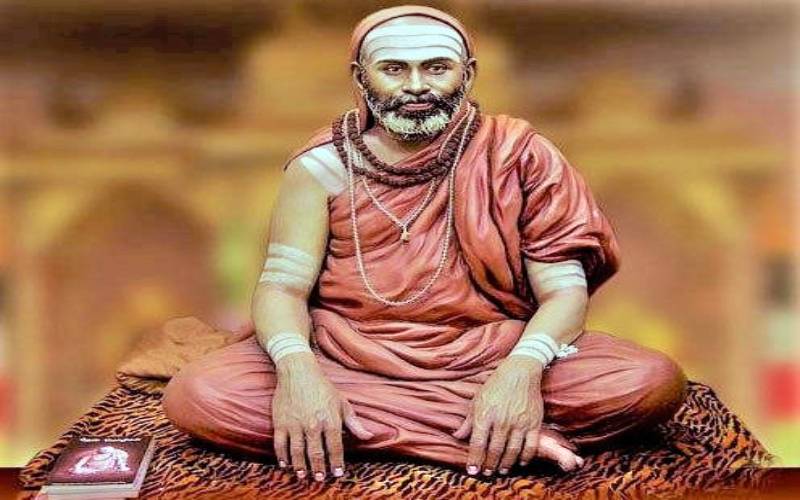
My first trip to Sringeri is still fresh in my mind. It took place during my school half-yearly holidays of 1979. I was eleven years old and began to chronicle the visit. It was the first chronicle to be written by me. My father Govindarajulu, mother Aravindakumari, uncle Subramaniam (Shanmuga Films), brother Suresh and I made a car trip to Mysore and then to Mangalore. We stayed at Hotel Dasaprakash in Mysore and went around the neighborhood for a few days. My uncle Srinivas, aunt Amitha, and Cousin Shiva kept us company. It was an unforgettable experience.
We traveled to Mangalore via Talakaveri. Mummy and daddy did a pooja at Talakaveri. On reaching Mangalore, we checked into Hotel Moti Mahal. A few days were spent going around the region. We visited the Udupi Krishna Temple and moved over to Sringeri. The temple had been closed after the ucchikala (Afternoon) pooja and therefore we retired to the choultry. My brother and myself spent the next couple of hours by exploring the campus belonging to the Sringeri mutt. It was simply huge and covered a few hundred acres.
The River Thunga flowed in-between and the fish playing inside was a sight to behold. The ancient Vidyashankara shrine and the shrine of Goddess Sharada were located next to each other. Both of us loitered and this led to the discovery of tidbits connected with Sringeri. This holy place was once known as Rishyashringagiri. This later came to be known as Shringagiri and then to Sringeri. It was so named after the great sage Rishyashringa. This sage had performed the Puthrakameshti yaaga and it resulted in the birth of Rama, Bharata, Lakshmana and Shatrugna.
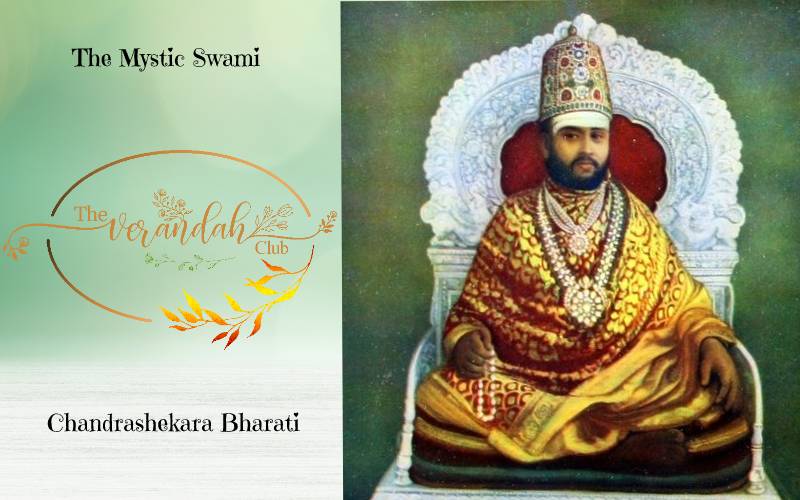
Sage Rishyashringa had been an auspicious person. There was a time when the kingdom of Anga was saved from drought due to his entry. Rain cascaded at that moment and the kingdom rose once again. The shrine of Rishyashringa and his wife Shantha is located at Kigga near Sringeri. A. Chandramoulishwaran, uncle from Sathyamangalam, used to tell us that his elders would request His Holiness Chandrashekara Bharathi to direct the priests at Kigga to perform a ritual bath to Rishyashringa in order to be blessed with abundant rainfall.
Well, we discovered that the incumbent pontiff of Sringeri was His Holiness Abhinava Vidyatheertha Swamigal and that his hermitage was located on the other side of Thunga river. His guru and predecessor was the great mystique and saint, His Holiness Sri Sri Chandrashekara Bharati (1892 – 1954). The great saint had succeeded His Holiness Sri Sri Satchidananda Shivabhinava Nrisimha Bharati Swami (1858 – 1912). This great pontiff had rediscovered the birthplace of Adi Shankara at Kaladi.
I understood that Sringeri was a great center and had been chosen by none other than Adi Shankara. The great philosopher-saint was deeply moved when he noticed a cobra using its hood to provide shelter for a frog on the banks of River Thunga. He therefore decided to establish the Dakshinamnaya Sringeri Sharadhapeetam on the banks of River Thunga. Shankara’s disciples Sureshwaracharya had been nominated as the first pontiff at Sringeri.
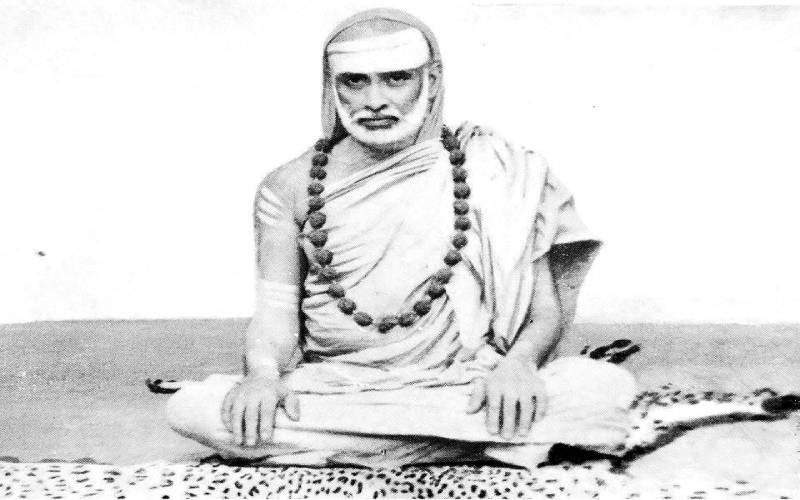
I learnt that Chandrshekara Bharati belonged to same lineage as Sureshwaracharya. The great saint was an enlightened soul of the order of Sadashivabrahmendra and Ramana Maharishi. He had been born in a poor but cultured family and had been named as Narasimha Shastri. Swamiji was the penultimate son amongst 14 children and was the only one who had survived. His grandfather had performed Kotilingaarchana with mahanyaasa. Chandrashekara Bharati was deeply devoted to God. He had been blessed and protected by the grace of His Holiness Satchidananda Shivabhinava Nrisimha Bharati. His extraordinary powers of comprehension and deep contemplation had made it clear that he was born to lead.
Narasimha Sastri had been a polite student and was equally kind and helpful to his classmates. He was very helpful to his parents and was following self-imposed restrictions from his childhood days. The great saint had learnt to control his mind, body, and sense organs. The gentleman whom he met in Sringeri told us that Chandrshekara Bharati led a life of an introvert but was good in his studies. He had spent his younger days by ruminating and meditating at the Vidyashankara temple in Sringeri. The pradosham days were spent by him in the same temple and he used to be immersed in meditation. His family made him move to Bangalore for the purpose of letting him continue his education at Bharatiya Girvana Proudha Vidya Abhivardani Paatachala. He had learnt Miaamsa Shastra at this place but was in search of a serene place for contemplation. His close friend showed him a cave in the ancient Gavi Gangadhareshwara Temple. He would spend time lost in contemplation at this holy cave.
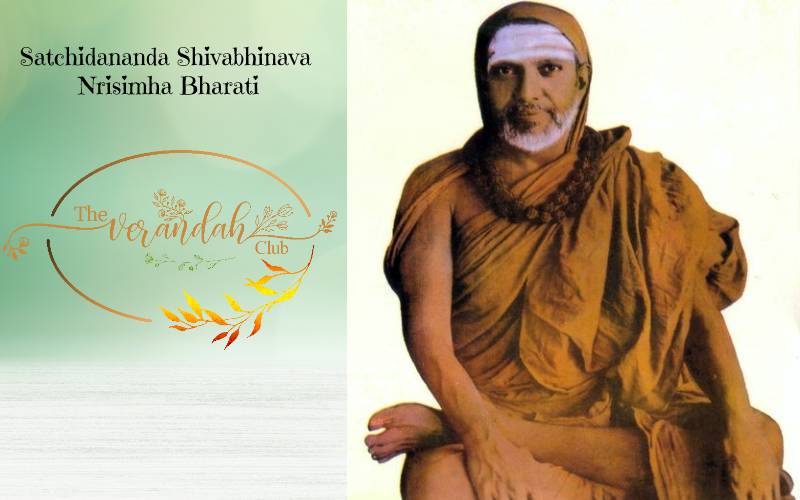
The young Narasimha Sastri completed his study of Purvamimaamsa and was about to take up the study of Vedanta. But he was asked to return to Sringeri as per the order of His Holiness Satchidananda Shivabhinava Nrisimha Bharati. Narasimha Sastri was set to adorn the seat of transcendental wisdom by becoming the aacharya of the Sringeri Sharadhapeetam. The incumbent pontiff had closely observed Narasimha and had understood that this unusual youngster had an in-built interest in scriptures, and this as accompanied by a profound sense of detachment.
The Jagatguru had daily prayed to Devi Parvati by reciting the verse, “Sarvajnam Sri Nrisimham Kuru Shivaada Ete Satvaram Madvinamram,” meaning, “Oh! Goddess! Please make Sri Narasimha adept in all scriptures immediately and make him an obedient and unpretentious disciple of mine.” These prayers bore fruit. In fact, the administrator of the mutt had chosen three others, but the pontiff decided to ordain Narasimha Sastri as Chandrashekara Bharati, the Shankaracharya of Sringeri.
Several of his relatives came to meet him. However, he made it clear they should not expect any special consideration from him. He requested his Purvaashrama mother not to expect anything from him and that her welfare would be taken care of by Goddess Sharadhamba. I was told that His Holiness was keen to realize God and therefore spent long hours in deep contemplation. He had been a strict disciplinarian and would devote his time to study the Vedas.
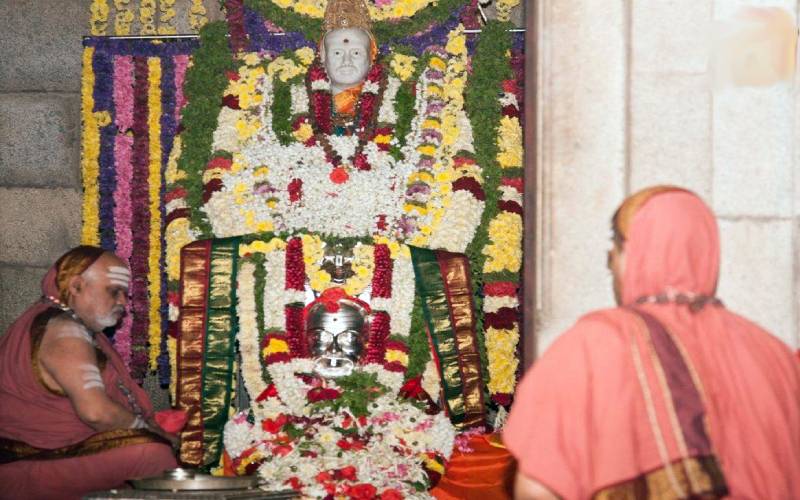
Chandrashekara Bharati would at times remain in deep contemplation for days, weeks, and many a times months together. He was known to remain standing in the River Thunga from sunrise to sunset. This Brahmajnani had been blessed to be the sage of Sringeri by none other than Goddess Sharadhamba herself.
Years passed by and Sringeri was also in need of a pontiff who would look into the administrative matter while also offering guidance to the devotees of Sharadhamba. Therefore, His Holiness appointed Srinivasa as his successor in the year 1931. He was ordained as Sri Sri Abhinava Vidyatheertha Swami and the charge of the peetam was handed over to him. The senior pontiff ensured that the successor was given an opportunity to gain a thorough knowledge of the shastras. On observing that his disciple had gained adequate inputs, Chandrashekara Bharati began to devote all his time to the contemplation of the divine. He ate very little and barely slept. His spiritual pursuits were rigorous and he gave up wearing the padukas. His Holiness had stopped using emblem of the peetam and had become a total renunciate. His exalted state and divine experiences were misinterpreted. Even the officials of the mutt could not understand him, and they went to the extent of harassing him. However, he never resented their attitude and he continued to treat them with affection.
Ramana Maharishi of Thiruvannamalai would advise his devotees to visit Sringeri and gain a darshan of Chandrashekara Bharati. His Highness Naalvaadi Krishnaraja Wodeyaar would often seek the advice of Chandrashekara Bharati in order to fill up spiritual vacancies. Chandrashekara Bharati was clear about Samaanya dharma and Vishesha dharma. He suggested that everyone adhere to that in their own interest.
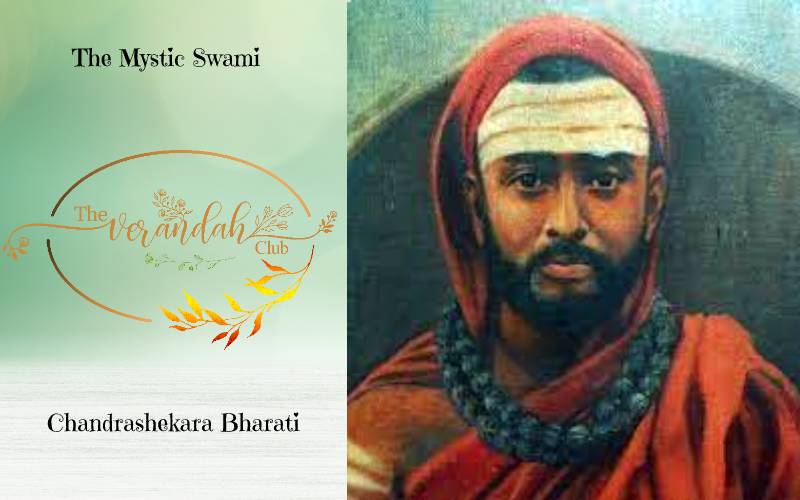
The great saint had spoken about the Muslim invasions and the resistance that were put up by dharmic Hindus. He was of the opinion that Indians had been misled by the British. Therefore, they had let down their guard and became slack while blindly following the tenets of Hinduism. This resulted in a lot of problems. The Khilafat movement caused disturbances in the Malabar and many were forcibly converted to Islam. A lot of violence had taken place and Shri Shraddananda Saraswathi of Arya Samraj went over to the Malabar region in order to ensure that people were brought back to the original fold.
We were told that Shraddhananda Saraswati had visited Sringeri discussed the subject with Chandrashekara Bharati and moved over to the Malabar. Chandrashekara Bharati had visited Coimbatore and stayed at the residence of the famous advocate, T. S. Balakrishna Iyer. He had delivered a special address on that occasion. The family of Gajanchi Kuppurama Aiyyah (Treasurer of Coimbatore) were quite close to Chandrashekara Bharati Swami. In fact, Gurumoorthy of the family continues to offer his prayers to the holy padukas everyday.
The Elders of Gurumoorthy had once visited Sringeri and sought an ordiance with Chandrashekara Bharati. But the pontiff had been in deep contemplation and they could only meet his successor Abhinava Vidyatheertha Swami. When they stated that they wanted to see the senior pontiff persistently, he just opened the door and stated that everything connected with him had been already been bestowed in his successor Abhinava Vidyatheertha Swamigal.
On another occasion, Parvati, the wife of the honourable V. S. Srinavasa Sastri (1869 – 1946), was upset on discovering that her thirumangalyam had got washed away while having a bath in the Richer Thunga. His Holiness Chandrashekara Bharathi had been present nearby and he understood her predicament. He immediately led her to the shrine of Goddess Sharadhamba and offered her a thirumangalyam from the deity. The great saint then directed her to ask her husband to use the thirumangalyam to redecorate her neck. Parvati Srinivasa Sastri was instantly immersed in joy and the needful was done. The Grace of Goddess Sharadhamba and the guidance of Chandrashekara Bharati ensured that she passed away as a dheerga sumangali.
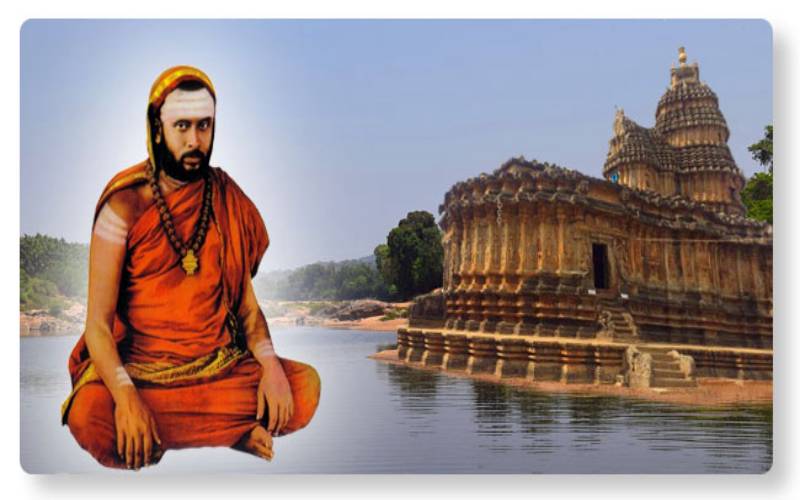
His Holiness understood the diversity which was present in religion. He did not believe in meaningless arguments connected with religion. Therefore, he suggested that people stay back in their original faith and was against religious conversions. The great saint emphasized that one’s thoughts and actions should be based on righteousness. Visiting temples, performing poojas and listening to lectures did not give the sanction to the devotee to perform misdeeds. He wanted everybody to lead a conscious life. He told people that they should never befriend desire, fear and anger. People were advised to adopt contentment and patience. He told them to be ever vigilant with regard to the same.
His Holiness Chandrashekara Bharathi had fulfilled his purpose of his incarnation. It was the Mahalaya Amavaasya of 1954 when the pontiff of Sringeri Chandrashekara Bharati cast the mortal body through yoga and became one with the divine. His body was made upright to a meditative sitting posture on the River Thunga and the body floated away. The great saint Sri Sri Chandrashekara had mastered yoga and supernatural powers were at his disposal. However, he never used the powers to gain name or fame. Mahaswami would at times use his powers in the interest of his devotees.
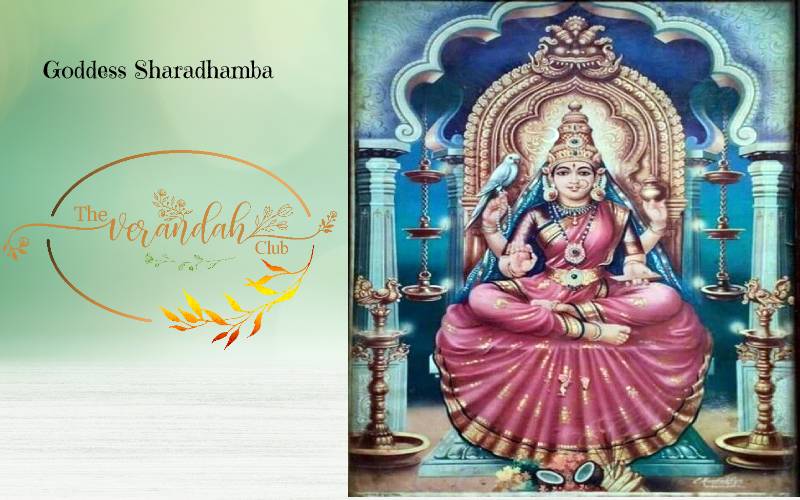
His Holiness Sri Sri Chandrashekara Bharati continues to guide and bless his devotees even today. Several of his followers and their descendant had witnessed miracles due to his grace. I understood that his life would guide one and all to follow the tenets as prescribed by the purushartha-s. Our visit to Sringeri became fruitful after we offered out prayers at the shrines of Vidyashankara and Goddess Sharadhamba. All of us continue to visit the shrine of Sharadhamba at Coimbatore.
Our visit to Sringeri became even more fruitful at the time of our house warming during the December of 1994. Our house was named Sharadha. Goddess Sharadha had become dear to us due to the grace of His Holiness Chandrashekara Bharati. I felt further blessed when my wife Sujatha and myself received the auspicious saree that had adorned Sharadhamba on the day of our marriage, 12 June 1995.
We were further blessed when we conducted the Aksharaabyaasam of our son R. K. Madhav Balaji at the holy shrine of Sharadhamba. The blessings and the guidance of His Holiness Sri Sri Chandrashekara Bharati has given me the opportunity to share my experiences and impressions to the readers of www.theverandahclub.com
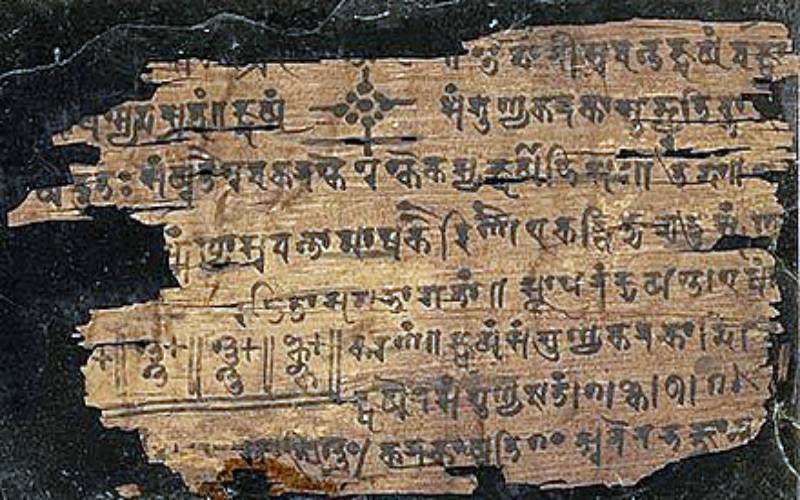
It was on the banks of the River Thunga that I came to know that the ancient Sharadha civilization had existed in Kashmir and the Sharadha lipi had once been very popular in India. Findings tell us that the Sharadha script is 2000 years old. Hari Kiran Vadlamani, the founder of Indica, is now keenly working in order to revive the Sharadha lipi.
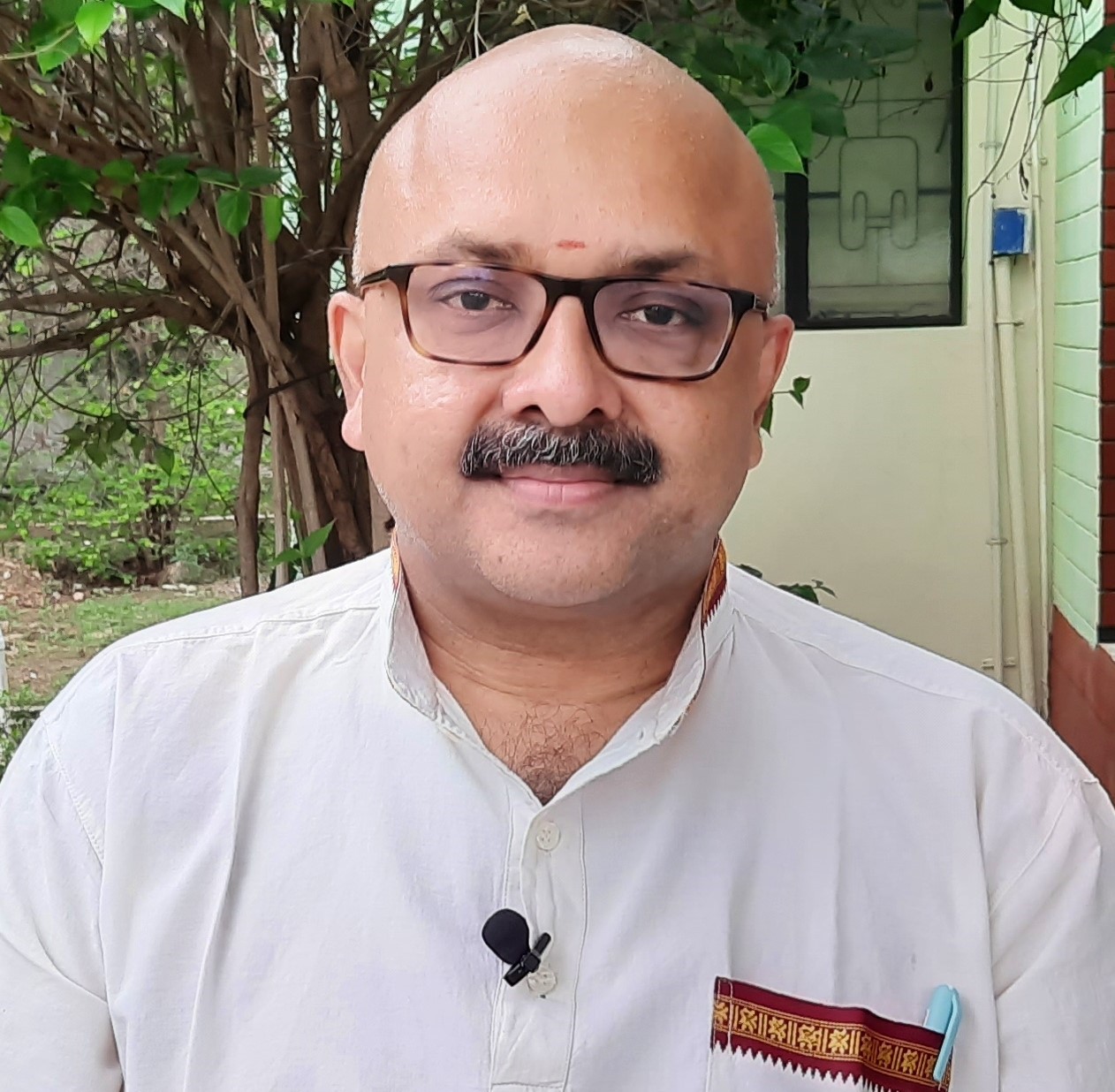
Mr. Rajesh Govindarajulu is one of the founding members of the Verandah Club Pvt. Ltd. He is a leading columnist, historian, jeweler, entrepreneur, and a heritage enthusiast who is earnestly working to revive the past in the light of the present. Experiential learning about the history of Coimbatore is his main course of interest and he is also a panel member of many colleges in the city.
NEXT ARTICLE
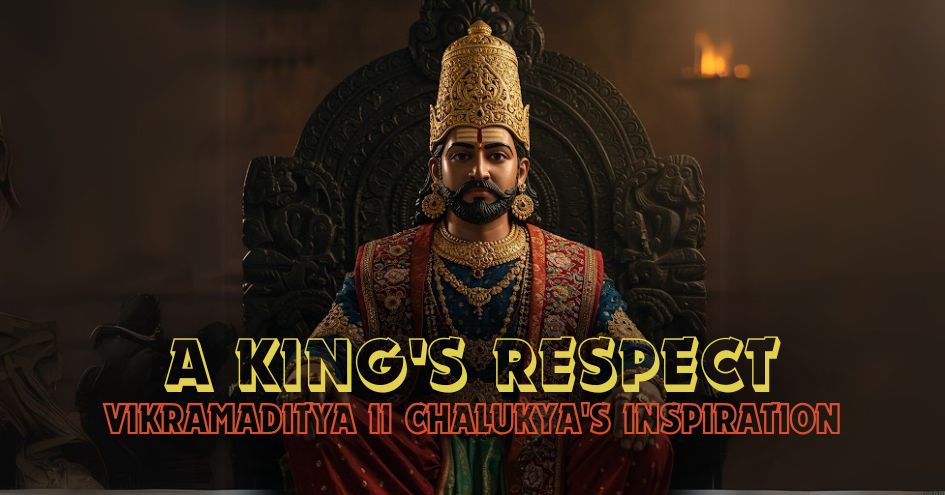
Indian History is rife with conflict between kings for power, territory and regional supremacy. We have seen instances where kings have made it a poin...
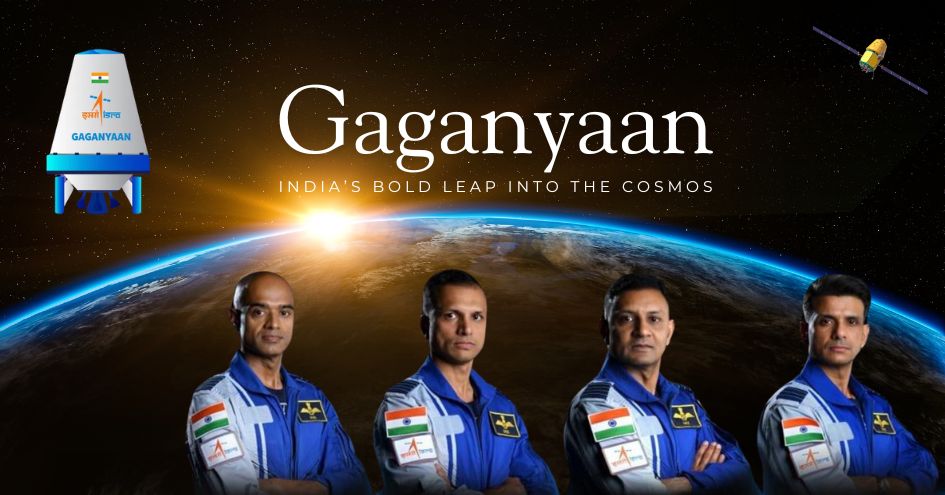
"Saare Jahaan Se Accha, Hindustan Hamara!"These immortal words, spoken by Squadron Leader Rakesh Sharma from the vast expanse of space in 1984, When t...
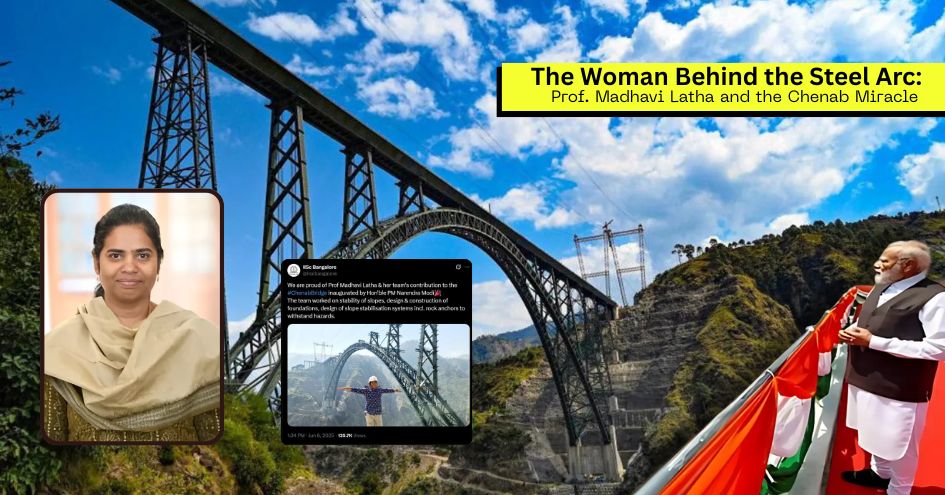
High in the rugged, unforgiving terrain of Jammu and Kashmir’s Reasi district, where the Chenab River slices through deep gorges and the Himalayas loo...